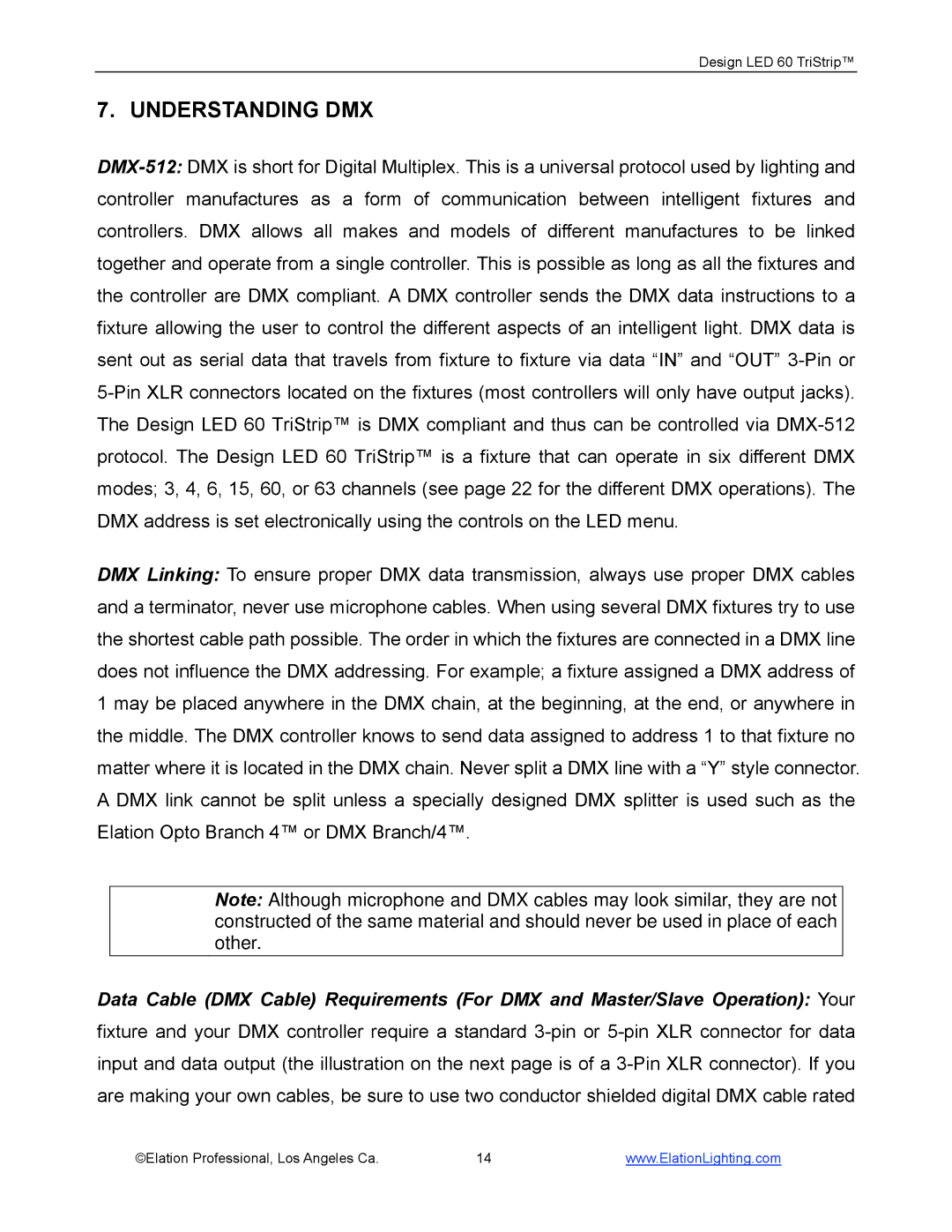Design LED 60 TriStrip™
7. UNDERSTANDING DMX
DMX-512:DMX is short for Digital Multiplex. This is a universal protocol used by lighting and controller manufactures as a form of communication between intelligent fixtures and controllers. DMX allows all makes and models of different manufactures to be linked together and operate from a single controller. This is possible as long as all the fixtures and the controller are DMX compliant. A DMX controller sends the DMX data instructions to a fixture allowing the user to control the different aspects of an intelligent light. DMX data is sent out as serial data that travels from fixture to fixture via data “IN” and “OUT” 3-Pin or 5-Pin XLR connectors located on the fixtures (most controllers will only have output jacks). The Design LED 60 TriStrip™ is DMX compliant and thus can be controlled via DMX-512 protocol. The Design LED 60 TriStrip™ is a fixture that can operate in six different DMX modes; 3, 4, 6, 15, 60, or 63 channels (see page 22 for the different DMX operations). The DMX address is set electronically using the controls on the LED menu.
DMX Linking: To ensure proper DMX data transmission, always use proper DMX cables and a terminator, never use microphone cables. When using several DMX fixtures try to use the shortest cable path possible. The order in which the fixtures are connected in a DMX line does not influence the DMX addressing. For example; a fixture assigned a DMX address of 1 may be placed anywhere in the DMX chain, at the beginning, at the end, or anywhere in the middle. The DMX controller knows to send data assigned to address 1 to that fixture no matter where it is located in the DMX chain. Never split a DMX line with a “Y” style connector. A DMX link cannot be split unless a specially designed DMX splitter is used such as the Elation Opto Branch 4™ or DMX Branch/4™.
Note: Although microphone and DMX cables may look similar, they are not constructed of the same material and should never be used in place of each other.
Data Cable (DMX Cable) Requirements (For DMX and Master/Slave Operation): Your fixture and your DMX controller require a standard 3-pin or 5-pin XLR connector for data input and data output (the illustration on the next page is of a 3-Pin XLR connector). If you are making your own cables, be sure to use two conductor shielded digital DMX cable rated
©Elation Professional, Los Angeles Ca. | 14 | www.ElationLighting.com |

